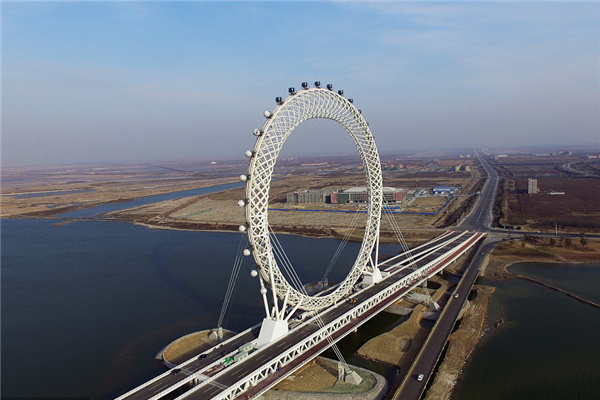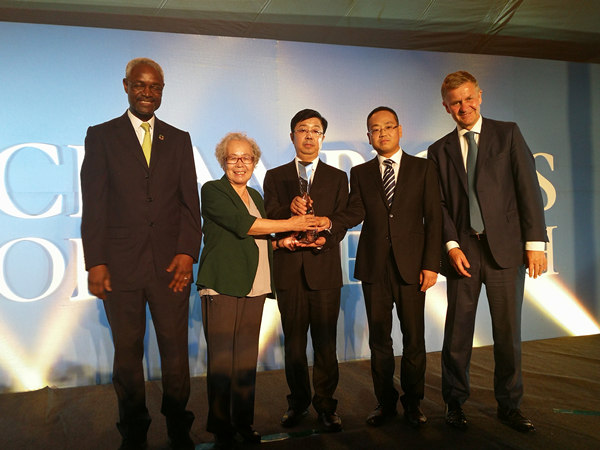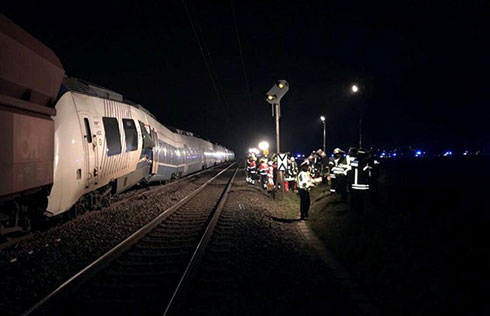

The booming Chinese shipbuilding industry has not only attracted the attention of global players, but also shaken the structure of the international industry.
However, after new shipbuilding prices bottomed out in late 2002, a recovery followed and prices have more or less doubled in recent years. But the higher prices will definitely challenge the industry's further development.
Baosteel, China's flagship steelmaker announced its price readjustment plan for steel products for the second quarter of 2008. The price of shipbuilding plate increased by 20 percent to $1,250 per ton, topping the prices of its overseas counterparts, including Japanese Nippon Steel Corporation (NSC) and South Korean Pohang Steel Corporation (POSCO).
Other major Chinese hull steel producers, including Ansteel and Nansteel, also joined the rally to further lift prices to cushion the impact on soaring raw material costs.
China's major shipbuilding plate suppliers, Baosteel, Ansteel, Chongsteel, Nansteel and Xinsteel, account for 70 percent of domestic output.
Surging hull steel prices, brought up by high iron ore prices, are likely to dent the profitability of China's shipyards because 90 percent of the shipbuilding plates is domestically supplied. Their woes will be further deepened due to concentrated orders last year.
Most shipyards accepted shipbuilding orders two or three years ago and are now having to absorb the additional costs themselves due to the steel price hike.
The primary factor behind soaring steel prices is the latest deal over iron ore prices reached among POSCO, NSC and the world's largest iron ore supplier - Brazilian CVRD, to lift the benchmark price by 65 percent, which was then accepted by Baosteel despite tough negotiations.
China is the world's largest iron ore importer and the price hike substantially adds to the production cost of Chinese steel mills. Moreover, skyrocketing fuel prices and increasing labor costs also weigh on the overall production costs.
China's new Labor Contract Law and Social Insurance Law are also expected to bring up the labor cost by 10 percent year-on-year. Meanwhile, the yuan's appreciation and a rise in the loan interest rates have driven up costs by 25 percent. Bank loans are the main financing source for ship owners. Steel typically accounts for 20 percent of the total cost of shipbuilding and about 40-50 percent of total procurement cost. Adverse upstream cost increases will also bring affect over shipbuilders' purchasing costs.
Shipyards that do not have a long-term supply deal or cannot renegotiate a hike with buyers will be hit. With concentrated vessel orders in 2007, local fleet capacity will be substantially expanded whereas demand for cargo shipping will experience a downturn. Analysts say this will negatively impact the profits of liner shipping companies and their schedules for new booking new orders.
The market will witness a downturn after the climax of bulk carrier deliveries in 2009 and 2010.
Compared with their South Korean and Japanese rivals, Chinese shipbuilders are more sensitive to the soaring steel prices, due to the overwhelming low value-added product of bulk carriers, which account for a higher proportion of the prices.
According to statistics from British Clarkson, the world's largest shipbroker, China received 55.8 percent of the world's bulk carrier orders, twice as many as South Korean shipbuilders.
With the negative impact from the US sub-prime credit squeeze, many medium-or-small-sized ship owners cannot ensure enough funding from the banks. Cancellation of ship orders, especially for bulk carriers, is the only way out to resolve the financial crunch.
The real challenge for shipbuilders will be if they are able to reduce costs in line with potentially lower prices.
Therefore, Chinese shipbuilders are expected to adopt a more selective approach to clients' orders and reduce the number of bulk carrier contracts. Previous practices of receiving low value-added bulk carrier orders will put them on a riskier edge, particularly against the backdrop of soaring production costs.
In order to reduce overall costs, it is necessary for Chinese shipyards to work economically and technologically with steel mills through mutual shareholding or equity participation, say analysts. The move would guarantee the profitability of steel mills during the shipbuilding industry boom as well as a stable supply and competitive cost for the shipyards.
Currently, team-ups among large-scale shipyards and steel mills are on track in China. For example, Baosteel holds an 18.8 percent stake in the Shanghai-based Waigaoqiao shipyard and a 35 percent stake in Jiangnan-Changxing shipyard.
An integrated and streamlined in-house R&D system jointly operated by the steel mill and shipyard can facilitate to identify hull steel technologies required on specification with the quality standards of the Ship Classification Societies.
Another way to mitigate risks associated with increasing costs is to try to ensure on-time delivery or even early delivery of vessels. Many owners are now willing to offer appropriate incentives to shipyards that produce effective vessels in a timely manner at a minimum cost.
The author is an expert at Samsung Economic Research Institute China. The views expressed are his own
(China Daily 04/28/2008 page3)













